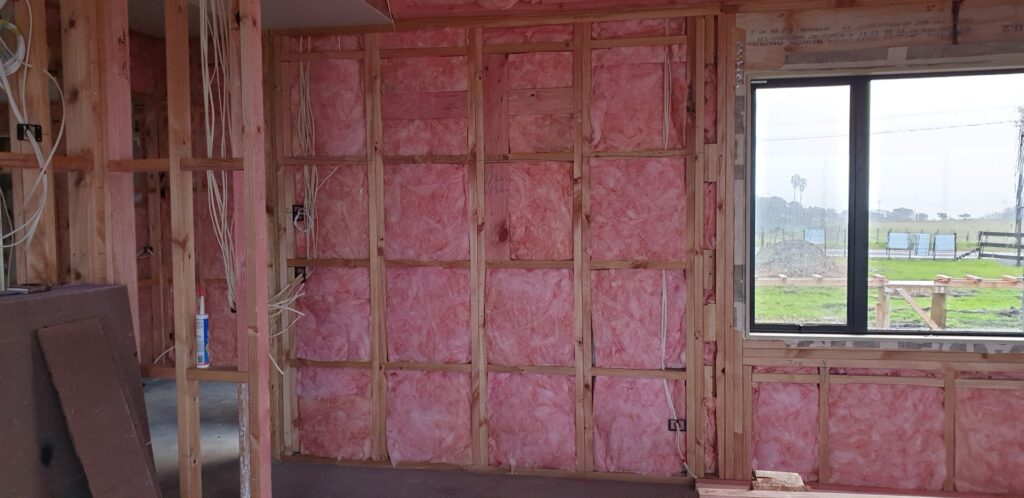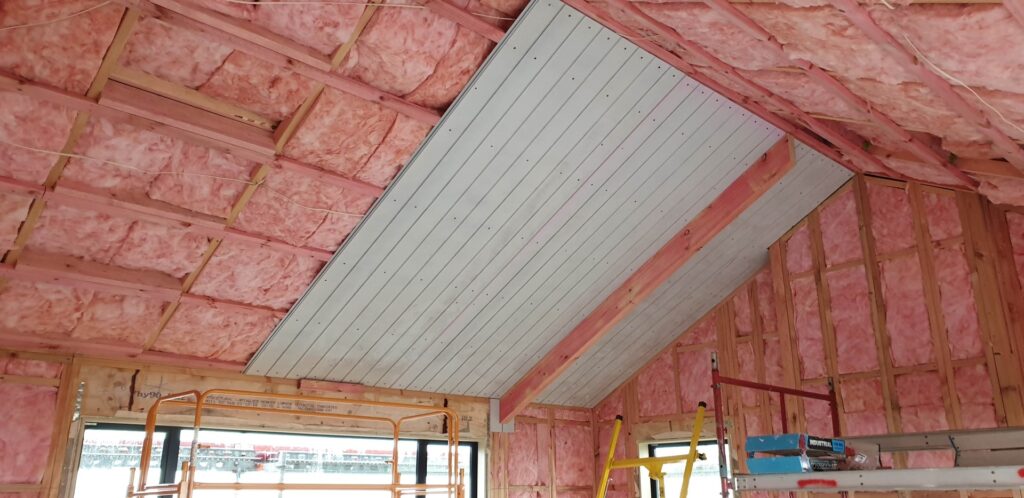New Zealand introduced new insulation rules for newly built homes and these come into effect during 2023.
This article gives you a simplified view of what these insulation changes mean to you, if you’re considering building in the near future.
Firstly, how is the amount of insulation in a home measured?
Insulation in construction is measured using R-Values. The ‘R’ stands for thermal ‘resistance’, and the value is given to the item being referred to, whether it be a floor, wall, window or roof.
To give you an idea of the scale, we mainly deal with R-Values between 0 (no thermal resistance) and 7 (fairly high thermal resistance). So a window with R0.37 is low insulation, whereas say a roof with a value of R7.0 is highly insulated.
(Disclaimer to the insulation gurus – we’re keeping it simple!)
NZ has been split into 6 ‘Climate Zones’
A coastal bach in Northland is in a very different climate to a chalet on the side of a mountain in Central Otago.
In the old rules, there were just three climate zones. Zone 1 was from Auckland/Coromandel north, Zone 2 was the rest of the North Island excluding Taupo/Mt Ruapehu area, and Zone 3 was that area and the entire South Island.
New Zealand has now been split into six climate zones, as seen in the map below. This makes a lot of sense, and has an impact on the R-values; ie, the climate zones further north require less R-Value for some elements of the building than the climate zones further south.
Which climate zone is your site in?

Map sourced from Building Performance H1 Energy Efficiency Acceptable Solution H1/AS1.
How the new Insulation Rules have been phased in
The below table shows a timeline across the top of how the new insulation rules in NZ have been phased in during 2022 and 2023.
Down the left side are the different components that make up the building envelope; windows and doors, roofs, floors and walls. On the 3rd of November 2022 the R-value requirement for Windows and Doors within all climate zones 1-6 increased from R0.26 to R0.37. The requirement for roofs, floors and walls stayed the same.
Then on 1st May 2023 the bulk of the new insulation rules came into effect. See the dark blue band below. This increased the windows and doors’ R-Value even further for climate zones 3-6, doubled the insulation requirement for Roofs to R6.6, increased insulated floor requirements and increased wall insulation requirement from R1.9 to R2.0.

Table sourced from Building Performance guide – ‘Transition period for the energy efficiency of housing’ 15th July 2022.
What were the old insulation rules?
The light blue bars on the left show the old insulation rules for each climate zone in NZ. Take a moment to digest these, in comparison with the new insulation rules in dark blue on the right for each of the climate zones.
An example – Project complying with the new insulation regulations
Say we’re designing a home in the Bay of Islands in 2024. As per the above map this is in Climate Zone 1, so would require the following building elements to have the associated R-values:
Windows & doors: R0.46 (where we used to be able to use double glazed aluminium joinery with normal glass, we now need to specify thermally broken double glazed aluminium with medium grade ‘Low-E’ glass, or UPVC joinery with a low grade Low-E glass)
Roofs: R6.6 (Remember, the minimum used to be R2.9, so the new rule is over double this.) In the main, we’ll be doing twin layers of insulation above your ceiling to achieve this new insulation requirement.
Floors: R1.5-R3.0 (depending on the floor type) – we will need to do underslab insulation, which wasn’t previously required, or extra underfloor insulation for timber floors.
Walls: R2.0 – most walls can still stay as 90mm which is standard for NZ timber framing, but the insulation quality will be increased to meet the new rules)

The above photo is of an Arcline Architecture project in 2019 complying with the old insulation rules.
So what do the new insulation rules mean for you?
There’s two outcomes – an increased cost of building but, at the same time, a home that is more energy efficient and well insulated.
As the above example project shows, the required R-Value of the full building envelope has increased (floors, walls, windows and roof). Therefore we need to specify more insulation and better quality insulation to meet the Building Code requirements which, without a doubt, adds cost to the building of all homes in New Zealand.
How do we calculate the R-Value of items within your home?
Here at Arcline we’re committed to meeting the new insulation rules in the most cost effective way for you when you’re building your home. We’re now using in-depth software called ‘Design Navigator’ which allows us to enter all components of your home – floors, walls, windows, doors, roofs – and by doing this we are allowed to trade off the insulation of one component to another.
Free 6 Part Email Series:
'Designing Your Home'
So how do we increase the R-Value of floors, walls, windows and roofs?
By increasing the amount and the quality of the insulation products we’re using in the construction of your home.
Floors – adding underslab (concrete) insulation, slab edge insulation or, for timber floors, extra and better quality underfloor insulation.
Windows & Doors – adding thermal breaks to the joinery, using PVC joinery which doesn’t conduct temperature like aluminium does, using better quality Low-E glass, filling the airgap between double and triple glazed joinery with a higher quality air/gas, and insulating garage doors and entry doors.
Walls – increasing the quality and depth of the insulation we’re using in the walls, often meaning thicker walls to hold larger insulation and reducing the number of studs and nogs which are treated as thermal bridges.
Roofs – this is the biggy. With the minimum R-Value doubling, double layers of high quality insulation are required, or very dense high R-Value insulation needs to be installed in the roof cavity. Condensation is a large risk with adding insulation in roof spaces, so extra measures need to be taken to ensure moisture isn’t a catalyst for mould growth.

The above photo is of an Arcline Architecture project in 2019 complying with the old insulation rules.
Who makes and enforces these new insulation rules?
The insulation requirements are set by the Governments Building Performance Department, part of the Ministry of Business, Innovation & Employment. They have a set of regulations called the Building Code, and one of the sections is called H1 – Energy Efficiency, and this details the regulations of insulation for buildings in New Zealand.
Architects, Designers and Draftsmen have to adhere to the Building Code when detailing plans, and local Councils check house and building plans against this code to confirm compliance. You must comply to get an issued Building Consent for your project, therefore everyone has to adhere to the rules!
In Summary: The New 2023 NZ Insulation Rules
Some will argue it’s unnecessarily increasing the cost of building in New Zealand. Others will argue that it’s long overdue and the new rules are needed to improve thermal resistance and liveability of new homes across the country. Either way, it’s law, so we don’t see the insulation requirements ever going back to where they were.
Contact the Arcline Team today to discuss your upcoming project.
